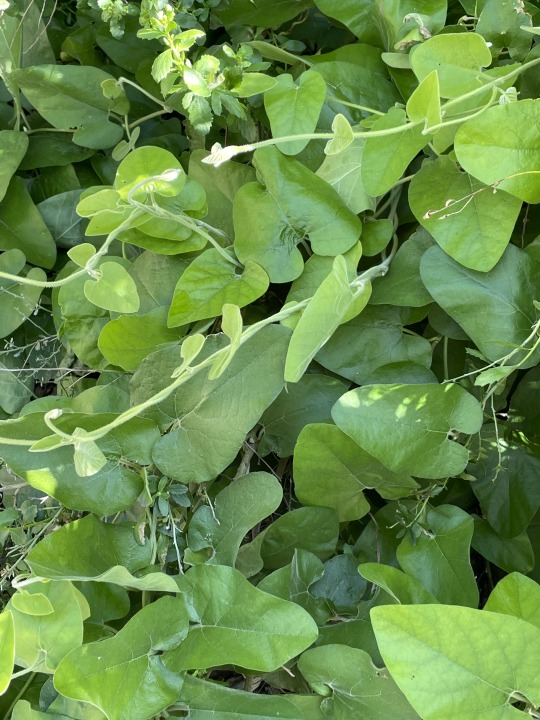#Aristolochiaceae
Text


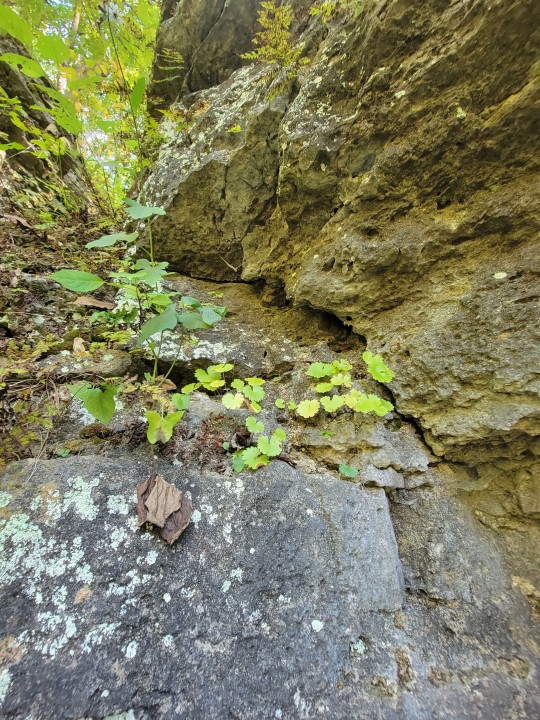


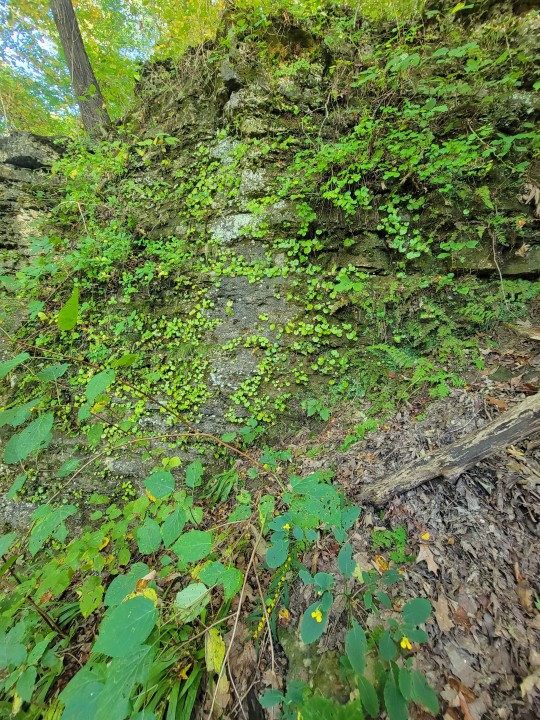
Sullivants cool wort, a globally rare species considered an indicator of consistantly cool and humid microclimates and associated with glacial refugium. I didnt know this population exsisted in jefferson co. / clifty falls state park. The wall may be the only location in the gorge that contains the species; rather, the only easily accessible spot. Beleive it or not I was looking for stiff gentian, specifically more of the small wet rock in partial shade stiff gentian. Unfortunately I checked on both of the old populations and there may end up being a local extripation.


Gentiana quinquefolia and open limestone sill habitat in part shade. Other cool species:


Aristolochia serpentaria
#aristolochiaceae#aristolochia serpentaria#indiana#botany#ecology#wildflowers#plants#plantblr#gentiana#gentiana quinquefolia#sullivantia sullivantii#sullivantia#botanical#green
73 notes
·
View notes
Text

Aristolochia californica
This vine with its odd-looking flowers is a native of northern California, and is sometimes called the California pipevine. The idea here is that the flowers are reminiscent of a meerschaum pipe, but this requires a little imagination. The flowers are visited by the Pipevine Swallowtail butterfly, which depends on the vine for its life cycle. Aristolochia lends its name to the family Aristolochiaceae, with many of the species having flowers just as odd and fascinating as this one.
-Brian
29 notes
·
View notes
Text
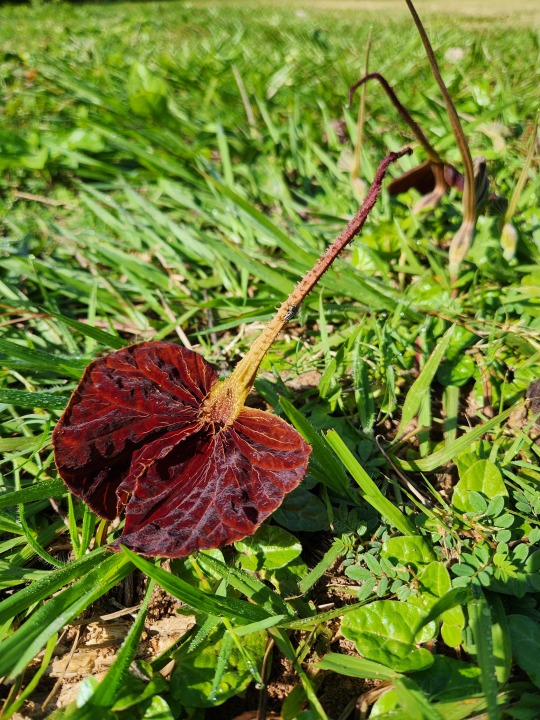
Sometimes you come across really interesting plants in boring places. This is Aristolochia lindneri, a plant in the birthwort family that occurs only in Chiquitania region of the state of Santa Cruz, Bolivia and possibly northwestern Paraguay. Weirdly, this population was found in a mowed lawn near a swimming pool. Go figure.
#if you're thinking “wow that plant kinda looks like...” that's where the common name for the birthwort family came from#aristolochia lindneri#birthwort#aristolochiaceae#plants of bolivia#plants of santa cruz
21 notes
·
View notes
Text
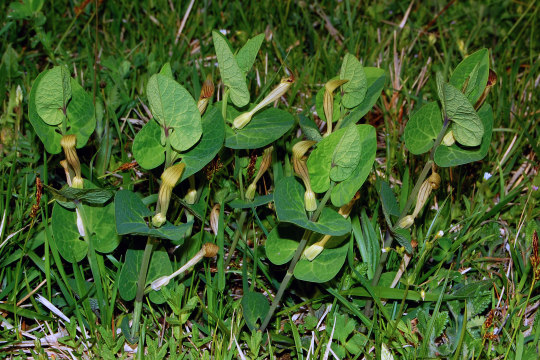
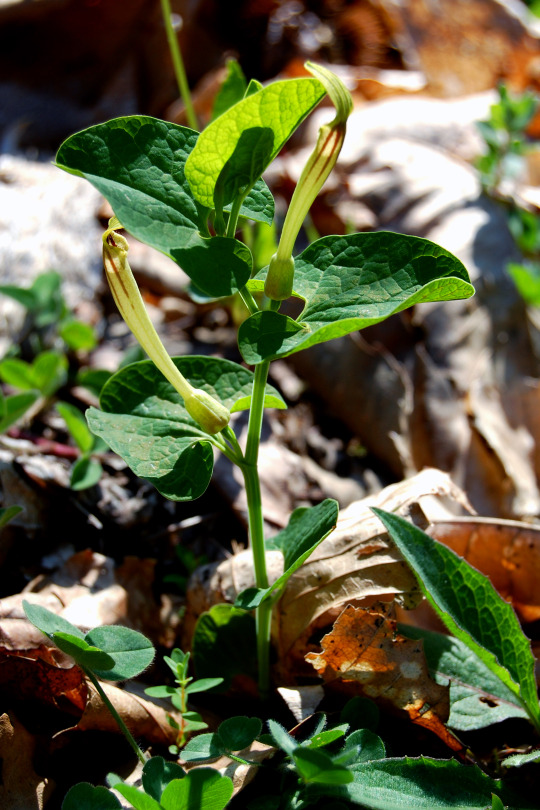
A - Aristolochia rotunda L. - Aristolochia rotonda (Aristolochiaceae)
35 notes
·
View notes
Text
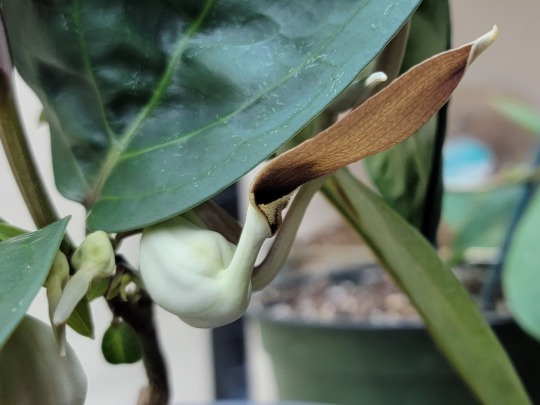

Aristolochia philippinensis. I bought this and Aristolochia salvadorensis last year; both are tropical, shrub-to-tree-sized species. There was a slight learning curve, as neither did much after arrival until this past February, when temperatures began to warm. They're both sensitive to dry conditions and will abruptly abort new growth if not kept well-watered, but existing growth endures underwatering pretty well, reflecting adaptation to seasonal dry periods. Of the two, A. salvadorensis is definitely the less tolerant, and you might never see it grow if you water too irregularly or too shallowly.
Recently, I accidently left them in a tray of water for two days. The saturation prompted a massive burst of new growth. They're not kidding about the need for moist conditions! (Just remember "moist" is not "aquatic" - they still need drainage and a little bit of drying time between waterings to ensure their roots stay aerated.) While salvadorensis is probably not going to bloom until it puts on some size, philippinensis is very generous with flowers, and has at least 4 separate groups of buds forming right now. So far an easy plant that seems happy under lights.
32 notes
·
View notes
Video
n11_w1150 by Biodiversity Heritage Library
Via Flickr:
Gartenflora. Erlangen :F. Enke,1852-1940. biodiversitylibrary.org/page/40103255
#Botany#Gardening#Germany#Periodicals#Plants#Ornamental#Smithsonian Libraries#bhl:page=40103255#dc:identifier=https://biodiversitylibrary.org/page/40103255#plant#flower#Aristolochia tricaudata#flickr#botanical illustration#scientific illustration#weird plant#i love it#Aristolochiaceae#birthwort
0 notes
Text
Jav teen big tits beautiful japanese
una rica cogida
Sexy MILF with awesome tits loves asian cock
Latex Lucy in a Box at LatexPussyCats
Blonde busty massage slut Alyssa Lynn rub cock between her big round tits
Gay cuzinho gostoso
Marvelous Kendall Karson feels a rod
Teen boy first gay sex and naked new york men porn free But the
WebCamModels Hidden Camera
Guy seduces teen and old man fucks hot babe Finally at home, finally
#tetrabelodont#guessers#palpebral#two-rowed#podophthalmian#National#stamen's#lampmaker#repossesses#nonability#unfatherliness#hand-trim#pickpockets#orometry#semicursive#McDonough#Sugihara#Wahkuna#ordinands#Aristolochiaceae
0 notes
Text
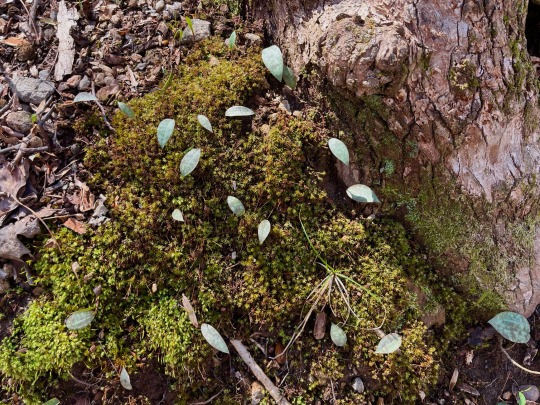
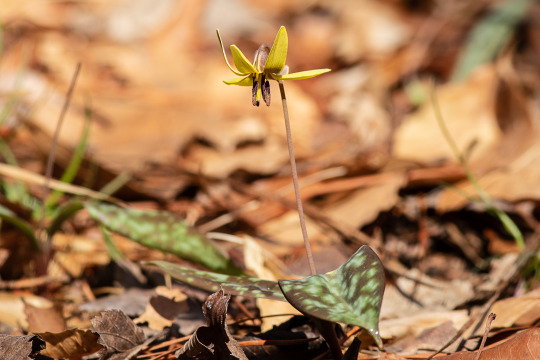
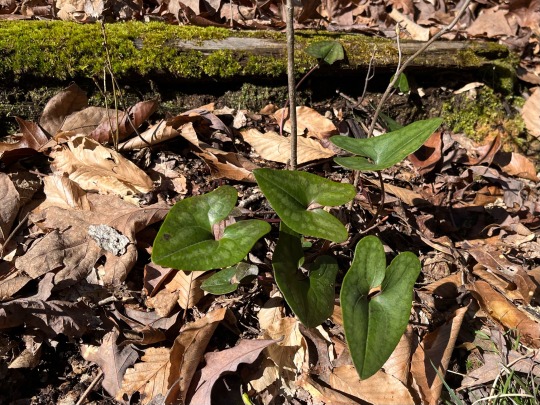
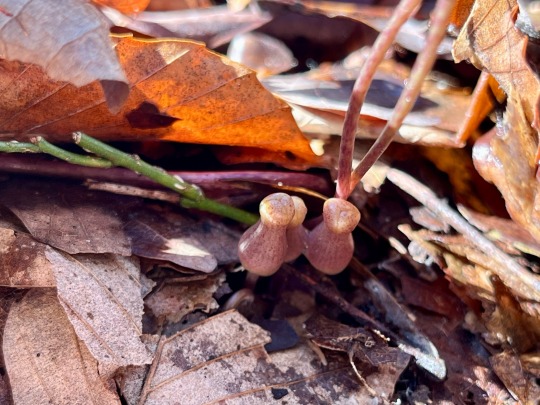

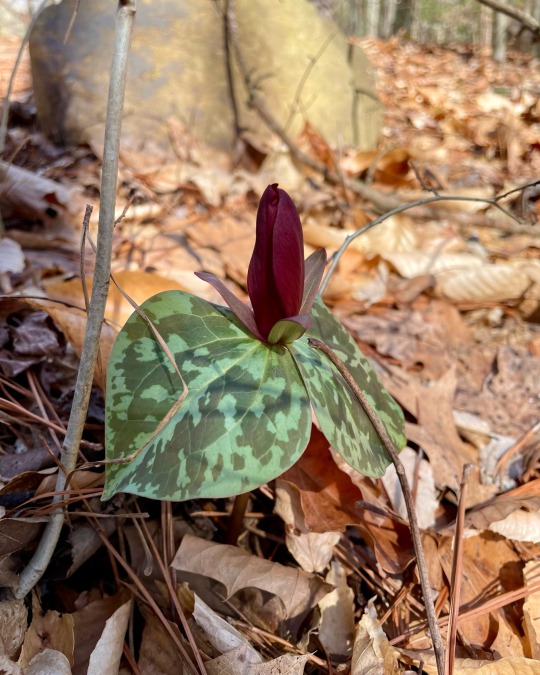
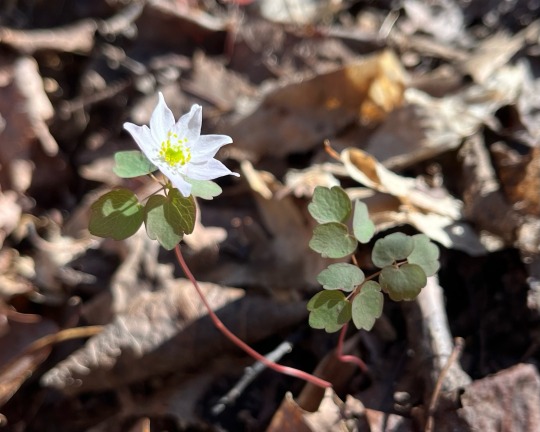
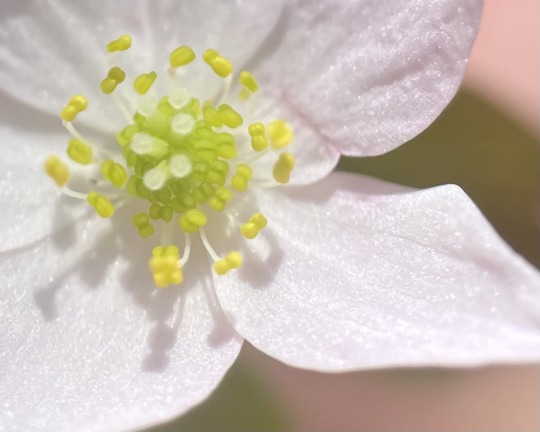


It’s been a while since we’ve gotten out. Too long a while. By row:
(Yellow) Trout lily (Erythronium americanum, Liliaceae)
Little brown jug (Hexastylis arifolia, Aristolochiaceae)
Bloody butcher (Trillium cuneatum, Melanthiaceae)
Rue anemone (Thalictrum thalictroides, Ranunculaceae)
Mayapple (Podophyllum peltatum, Berberidaceae)
These are all a week old, and the trout lilies are already (almost) all bloomless — they ain’t called ephemerals for nothing. I am absolutely thrilled for the return to bloom of our local Hexastylis offerings, and the trilliums are of course a favorite too. An excellent month for mottled leaves.
Many thanks to @krieper for the use of her photos in rows 1, 3, and 5. Much credit also to these deciduously wooded hillsides, which have previously given us some beeches and their drops.
147 notes
·
View notes
Photo
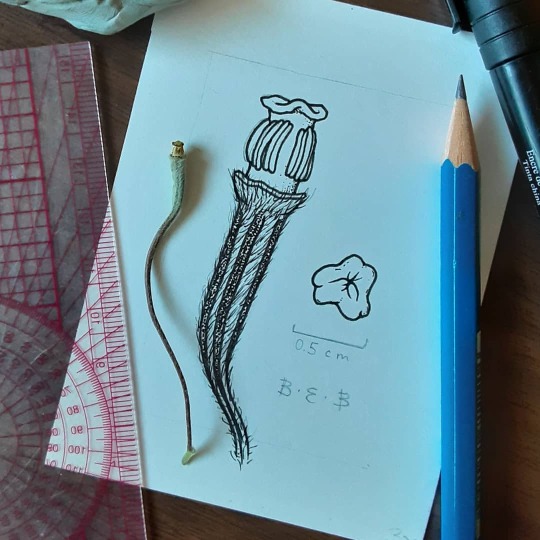
Opening up an Arisolochia flower to find what's inside is an adventure! The stamens are fused to the style and stigma, forming one combined ♂/♀ structure: the gynostemium. In Aristolochia californica (CA snakeroot or pipevine), the anthers are in three pairs of two and the stigmatic surface is three lobed. I think it’s both kinda cute and kinda creepy, especially with that strange, musty smell. #Aristolochiaceae #Aristolochia #AristolochiaCalifornica #pipevine #botany #plants #nature #art #science #scientificillustration #botanicalillustration #lineart #penandink #inkdrawing #linedrawing #illustration #plantart #CalBG #nativeplants https://www.instagram.com/p/B_siqxgAA1L/?igshid=88i49o59sopz
#aristolochiaceae#aristolochia#aristolochiacalifornica#pipevine#botany#plants#nature#art#science#scientificillustration#botanicalillustration#lineart#penandink#inkdrawing#linedrawing#illustration#plantart#calbg#nativeplants
4 notes
·
View notes
Photo
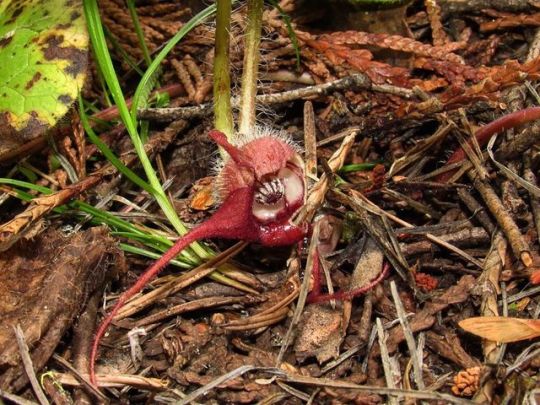
Wild Ginger, Asarum caudatum (Aristolochiaceae). ... Though called a ginger, this plant is not related to culinary ginger (Zingiber officinale, Zingiberaceae). Though some have used this plant as a ginger substitute, all plants in this family contain Aristolochic acid, which is classified as a carcinogen. ... Interestingly, this plant lacks petals. It is the maroon tepals which have long tails (caudate means “having a tail”). ... #asarumcaudatum #wildginger #aristolochiaceae #plants #botany #plantid #plantidentification #plantsofinstagram #plantphotography (at Leavenworth, Washington) https://www.instagram.com/p/Bx2dbFZlh3W/?igshid=koor3adgnc6k
#asarumcaudatum#wildginger#aristolochiaceae#plants#botany#plantid#plantidentification#plantsofinstagram#plantphotography
32 notes
·
View notes
Photo

Aristolochia californica
This vine with its unusual flowers is native to northern California, and plants in its genus are sometimes referred to as “Dutchman’s Pipe vines” because of the shape of the flowers. The plant serves as a host to the pipevine swallowtail butterfly, whose caterpillars are avoided by potential predators because of the toxins they ingest from eating the plant’s leaves.
-Brian
26 notes
·
View notes
Video
Aristolochia sp., Aristolochiaceae by Andreas Kay
Via Flickr:
from Ecuador: www.youtube.com/AndreasKay
10 notes
·
View notes
Text
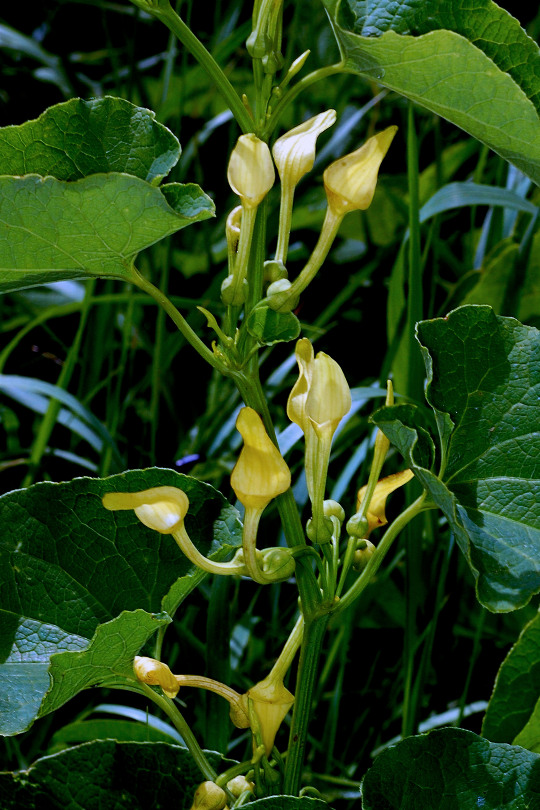
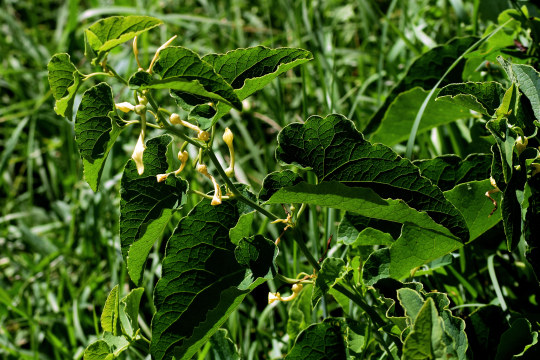
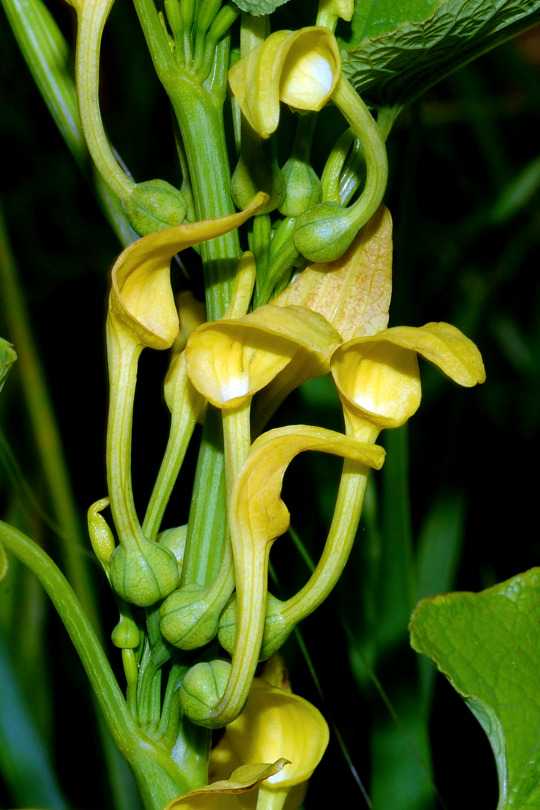
A - Aristolochia clematitis L. - Aristolochia clematite (Aristolochiaceae)
#photographers on tumblr#digital image processing#original photography blog#flowers#Aristolochiaceae
22 notes
·
View notes
Text
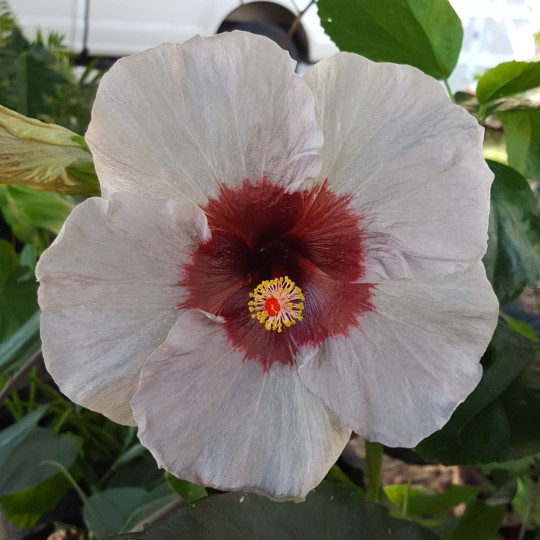
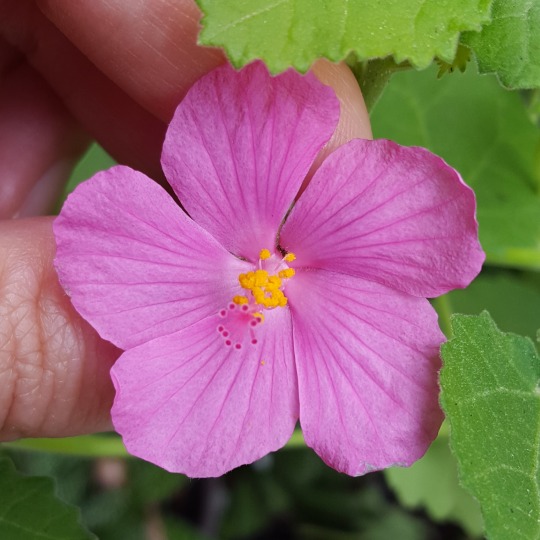

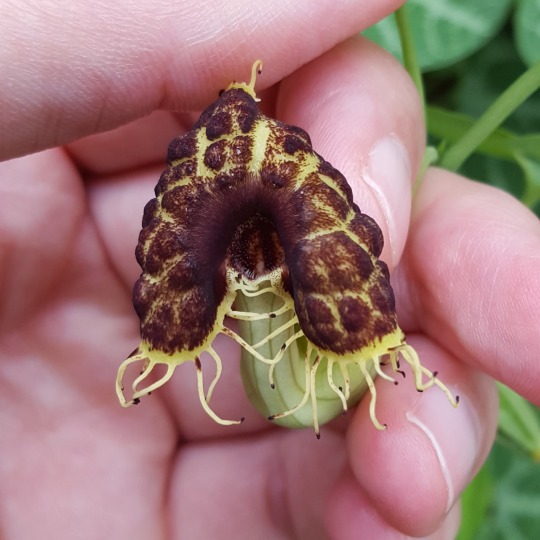
Clockwise from top: Hibiscus 'Blackbird Flying, Pavonia lasiopetala, Aristolochia fimbriata, and a rose started from a cut flower.
38 notes
·
View notes
Photo
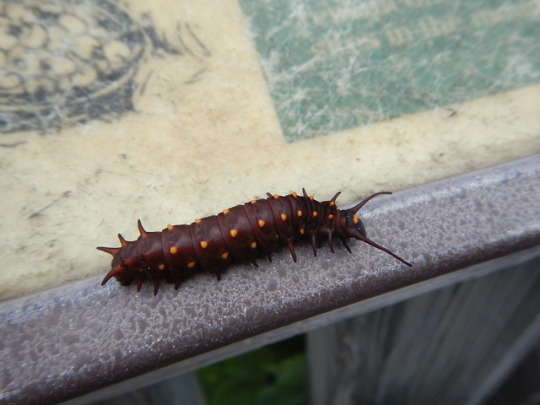

For many who hike the Appalachian mountains or who live in well forested locations in proximity to there food source you may have seen this alien looking caterpillar before. This is the devils bite pipevine swallowtail caterpillar, or rather the larva of the blue pipevine swallowtail butterfly, Battus philenor . I found this vibrantly colored larva climbing on an old firewatch tower information sign in the middle of Tennessee; which is a good indication to me that there may be some Aristolochia populations near by.
Why is this species referred to as the “devils bite” ?
Similar to the famed monarch, this species is also known for leaving a burning, bitter, or distasteful taste in many predators mouths. It can also lead to discharging the larva or butterfly after an attempt to swallow the species.
The toxin of choice is Aristolochic acid, a heavily carcinogenic, mutagenic, and systematic long term nephrotoxic phytochemical that can cause serious damage to nervous systems as well as cause some very unique cancers.
When I see these I become very excited as a botanist, this is because I associate them to: Aristolochia tomentosa, Isotrema macrophyllum, and Endodeca serpentaria. <- food sources in my area <3
I also associate this species with the Appalachian/eastern members of genus Lilium because of these swallowtails being one of the best pollinators for this species.
For those who are interested in entomology and ecology y’all should check out areas where batesian mimicry and predation effect is a point of interest in behavioral studies currently. Red-spotted purples, dark female eastern tiger swallowtails, female black, Ozark, and spicebush swallowtails, and female Diana fritillaries all are currently looked at as subjects of being nontoxic but preyed on less because of resemblance.
#Papilionidae#lepidoptera#Battus philenor#butterflies#mimicry#toxic#biodefense#cute#nature#hiking#batesian#aristolochiaceae
13 notes
·
View notes
